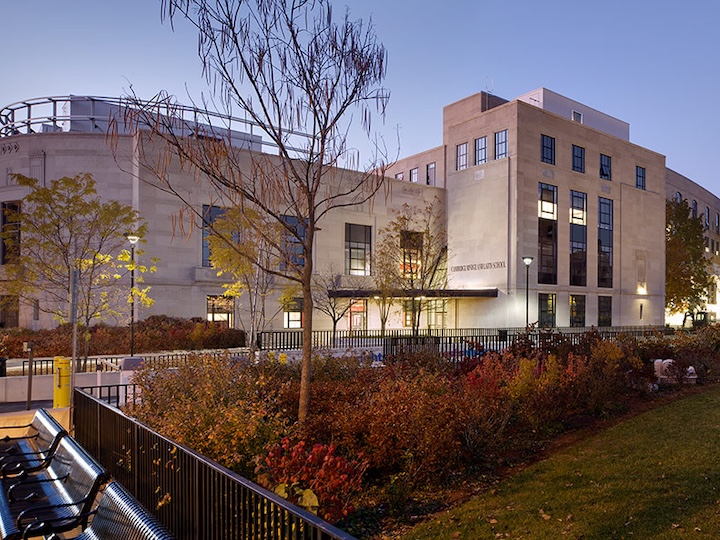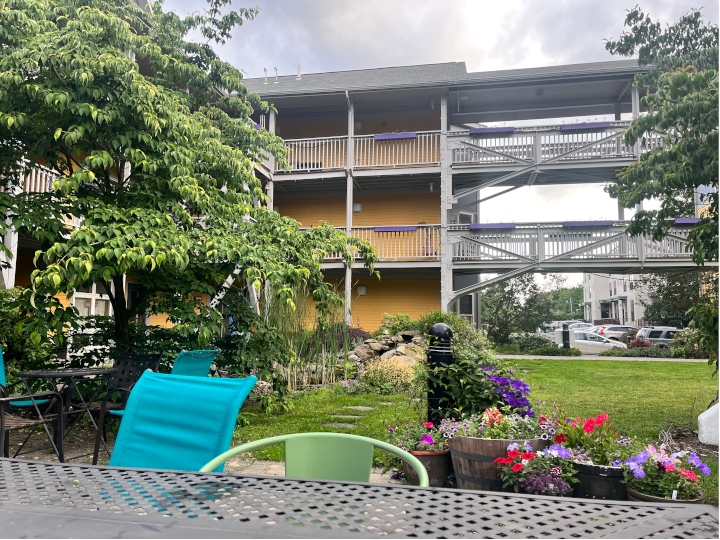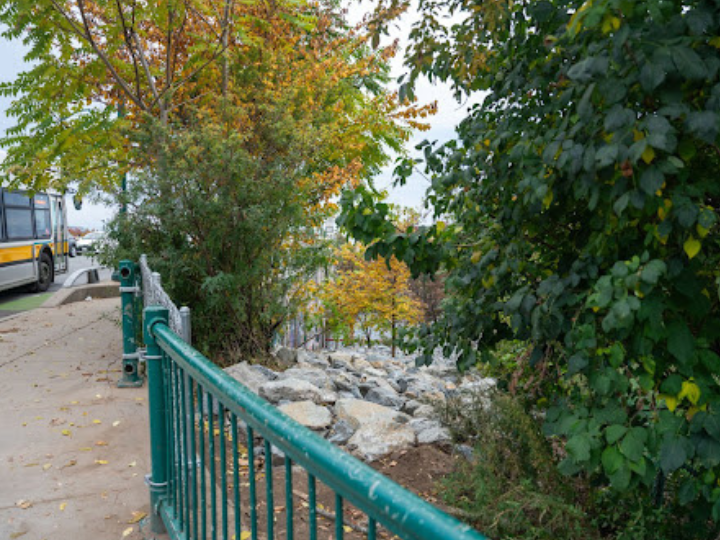“The instability of housing for families often creates anxiety and a sense of uncertainty.”
Cambridge Unhoused is a series of articles, columns, explainers, and informational graphics by the Boston Institute for Nonprofit Journalism documenting homelessness funding and services in Massachusetts with particular attention paid to Cambridge. Since the topic is complex and ever-changing, we are publishing multiple short focused pieces that highlight specific issues or stakeholders but that also connect with other coverage for this project. Media produced for the Cambridge Unhoused series is distributed through the MassWire news service of BINJ and can be found together at binjonline.org.
There were about 126 students experiencing homelessness in Cambridge Public School this fall—83 in grades PK-8, and 43 in grades 9-12, according to CPS.
While the school department works to provide a sense of stability and predictability for these students, some, especially those placed in shelters outside of the city, start falling behind academically as soon as they become homeless.
“Transportation is an issue for students who are placed in a shelter outside of Cambridge. It can take up to eight days for door-to-door transportation to be set up,” CPS Director of Communications Sujata Wycoff said. “Some students can’t get to school without transportation, so they are marked absent for the day(s). Missing school can result in learning loss causing them to fall behind academically and socially.”
While these students face many challenges even after they start receiving transportation services, they are guaranteed access to the same education as other children, including public preschool programs under the the McKinney-Vento Homeless Assistance Act, according to the Children’s Law Center of Massachusetts. Federal law gives specific rights to unhoused students and their parents, including the right to choose school of attendance, the right to immediate enrollment, and the right to summer enrollment and transportation.
School districts are also required to appoint education liaisons to ensure that school staff are aware of the rights students and their parents have under the law, according to the Institute for Children, Poverty & Homelessness. They must also provide public notice to homeless families, and to facilitate access to school and transportation services.
Federal funds provided to school districts through the McKinney-Vento Act can be used on basic school supplies, transportation to and from school and extracurricular activities, and specialized training and professional development for teachers and other school staffers. Per the Children’s Law Center, “McKinney-Vento is intended to guarantee homeless children and youths access to education and other services that will allow them to meet the same student academic achievement standards to which all students in the state are held.”

While unhoused students might have a legal right to the same education as housed students, they still face an uphill battle both academically and socially, Wycoff said. “[I]t is difficult for our students experiencing homelessness to participate in after school activities/programs unless someone can pick them up. … Transportation is only provided at the end of the school day, so kids are dropped off either at the shelter or their after school program.”
Wycoff said CPS has taken steps to make afterschool programs more accessible for unhoused students: “For students in grades 9-12, the district does provide all students free T passes to take public transportation to mitigate any impact that them being homeless may have.”
Still, the stigma of homelessness can also be challenging for kids living in shelters. Wycoff added, “Often students who are homeless can experience social isolation due to not having a permanent place to live. They also feel embarrassed for anyone to find out that they do not have a permanent home or that they are living in a shelter. … The instability of housing for families often creates anxiety for the students and a sense of uncertainty.”
School officials do what they can to provide a sense of normalcy when possible. “Our goal is to try to create routines, stability, predictability, and familiarity for the students while they are in our care to help mitigate the uncertainty that they may have due to them being homeless,” Wycoff said.
The school department also has a McKinney Vento liaison, as well as a social worker who specifically coordinates with families experiencing homelessness.
“Though we can’t offer housing, we refer families to community partners that work in housing stability such as the Multi Service Center and Cambridge Economic Opportunity Committee (CEOC),” Wycoff said. “We are in partnership with the Spot, which provides clothing, coats, shoes, toiletries, backpacks, school supplies, etc.”
Wycoff added, “Through a McKinney Vento grant, we purchase MBTA cards, Target gift cards, and other basic needs. … Other resources include school food pantries, market gift cards, job/career, immigration help, domestic violence, and mental health partners.”
While the school department offers services to help unhoused students, Cambridge Vice Mayor Alanna Mallon said the priority needs to be helping families find housing in the city. While Mallon acknowledged that 126 unhoused students is a lot, she also said that “it’s not so many you couldn’t figure it out.”
Mallon said she once spoke to a school superintendent at a conference who made the decision to buy a building to house homeless families in their district.
“I remember speaking to a school superintendent at a conference who said, We bought a building, because it was crazy that we were sending these families to these shelters outside of the district and back in,” Mallon recalled. “‘They didn’t have any aftercare services, they didn’t have any weekend services. They lost their entire network—whether it was family, or friends, or the school community.”
Mallon said the superintendent told her that becoming homeless was so destabilizing for the kids, who lost years of their education, that the district made housing them a priority.
“I remember thinking, like, Wow, that is a school superintendent who just understood that that adverse childhood experience … that trauma that becoming homeless can have on a student for years to come,” Mallon said.
While buying a building and giving the families of homeless students a place to live sounds simple, it would be very complicated, the vice mayor added.
“I think that would take a tremendous mindshift, right, and boldness that I don’t know that we are comfortable doing here in Cambridge sometimes. … I think it would require us either partnering with a nonprofit [or] buying apartment units. There would have to be a number of people involved in making something like that a priority.”
Asked about youth homelessness in his district, City Councilor Quinton Zondervan said that “our city and society in general do not have good answers for people in these situations and that is a terrible tragedy.”
“Of course we need to do everything possible to end youth homelessness and homelessness in general,” Zondervan said. “[M]y office has helped many families navigate housing instability over the years, and it is always very difficult especially when there is nothing that we can do to prevent them from being displaced. It especially weighs on me when there are children involved who will be uprooted from their schooling.”
Zondervan added that the city recently implemented a number of programs that could potentially benefit these families, including Cambridge Rise Up, universal pre-kindergarten, and updates to the Affordable Housing Overlay that help affordable housing developers create new homes more quickly.
“Hopefully the next council will consider creating a municipal voucher program to create more housing opportunities for those facing homelessness in our city,” Zondervan said.
“This is not easy work, but tinkering around the surfaces of our economic arrangements cannot eradicate these deeper systemic problems. … Policies like rent stabilization, social housing, universal basic income, and higher marginal tax rates on top income earners are a must if we want to create a more equal society with less homelessness.”
This article is syndicated by the MassWire news service of the Boston Institute for Nonprofit Journalism. If you want to see more reporting like this, make a contribution at givetobinj.org







